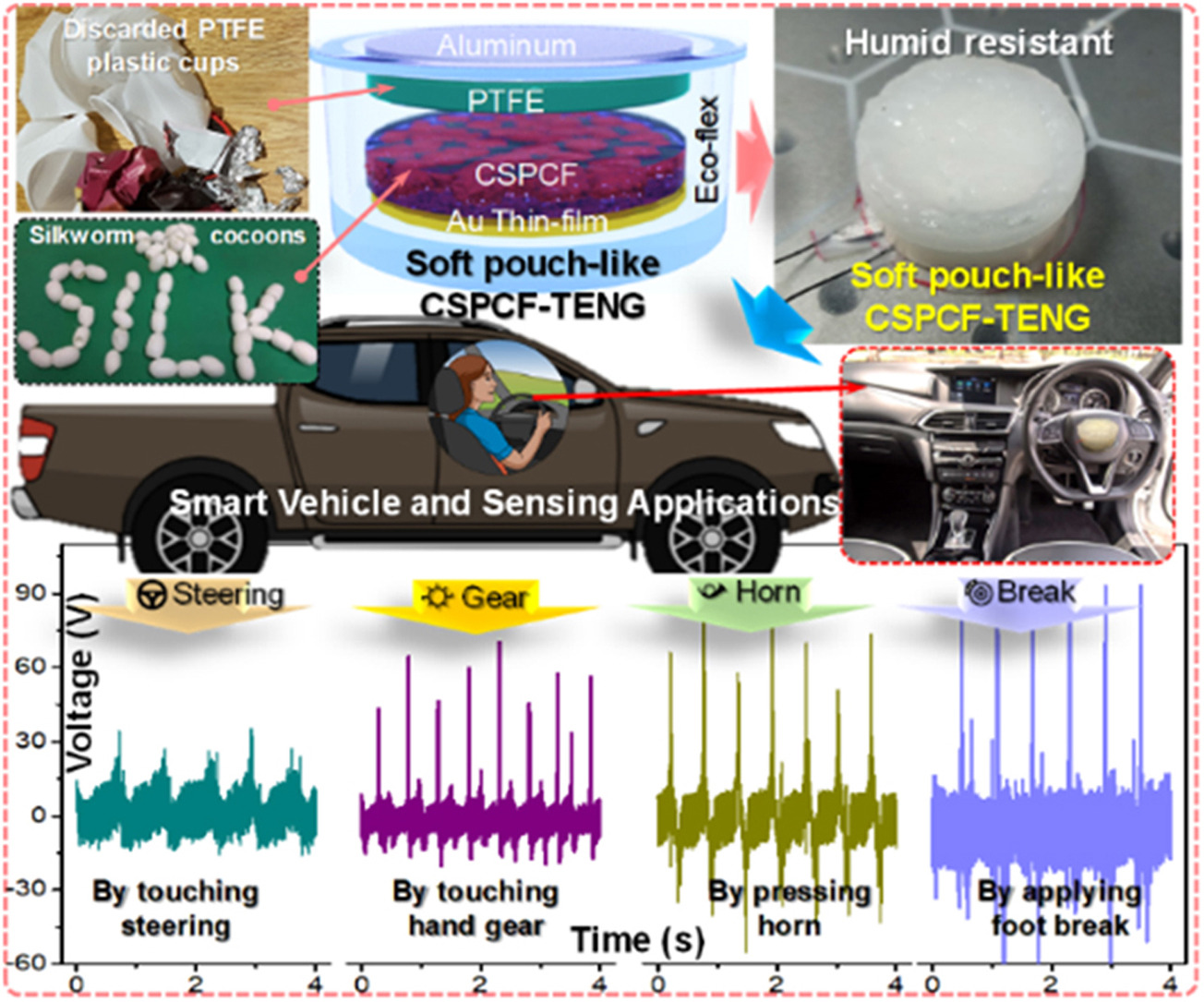An eco-friendly energy-harvesting smart sensor could help make roads safer by identifying potentially dangerous driver behaviour.
Triboelectric nanogenerators (TENGs) are an emerging technology that harvest freely-available mechanical energy from human activities. Now, engineers from the University of Surrey reveal how they used recycled plastic cups and silk cocoon waste to develop a soft and skin-friendly self-powered sensor. When coupled with an AI system and applied in a car setting, the smart sensor could flag potentially dangerous driving trends, such as slow brake-reaction times, for example. The highly flexible and biocompatible sensor could be used as a wearable or placed within the fabric of the steering wheel, horn, gear stick and brake pedal. In tests, the sensor provided real-time feedback on the driver’s actions, which allowed the AI system to compute performance.
“We are all excited by how AI will influence future consumer electronics, but this future must also be friendly to our planet. Our recycled silk-based smart sensor technology is a hint of what the future holds and, with support from industry, we believe we can soon bring it to market,” said Dr Bhaskar Dudem, principal author of the study and Research Fellow at the University of Surrey’s Advanced Technology Institute.
The sensor is pitted for other applications, too.
“Whilst in this example we tested our sensors to monitor driver behaviour, we believe the ideal application of the self-powered smart sensor technology is in future driverless cars and Industry 4.0 automation systems. This eco-friendly cutting-edge project inspires us at the Advanced Technology Institute to keep inventing solutions to real-world problems faced by society,” said Professor Ravi Silva, Director of the ATI.
The sensor was developed in collaboration with Kyung Hee University in South Korea. The project is funded jointly by the Engineering and Physical Sciences Research Council, UK, and the National Research Foundation of Korea.









